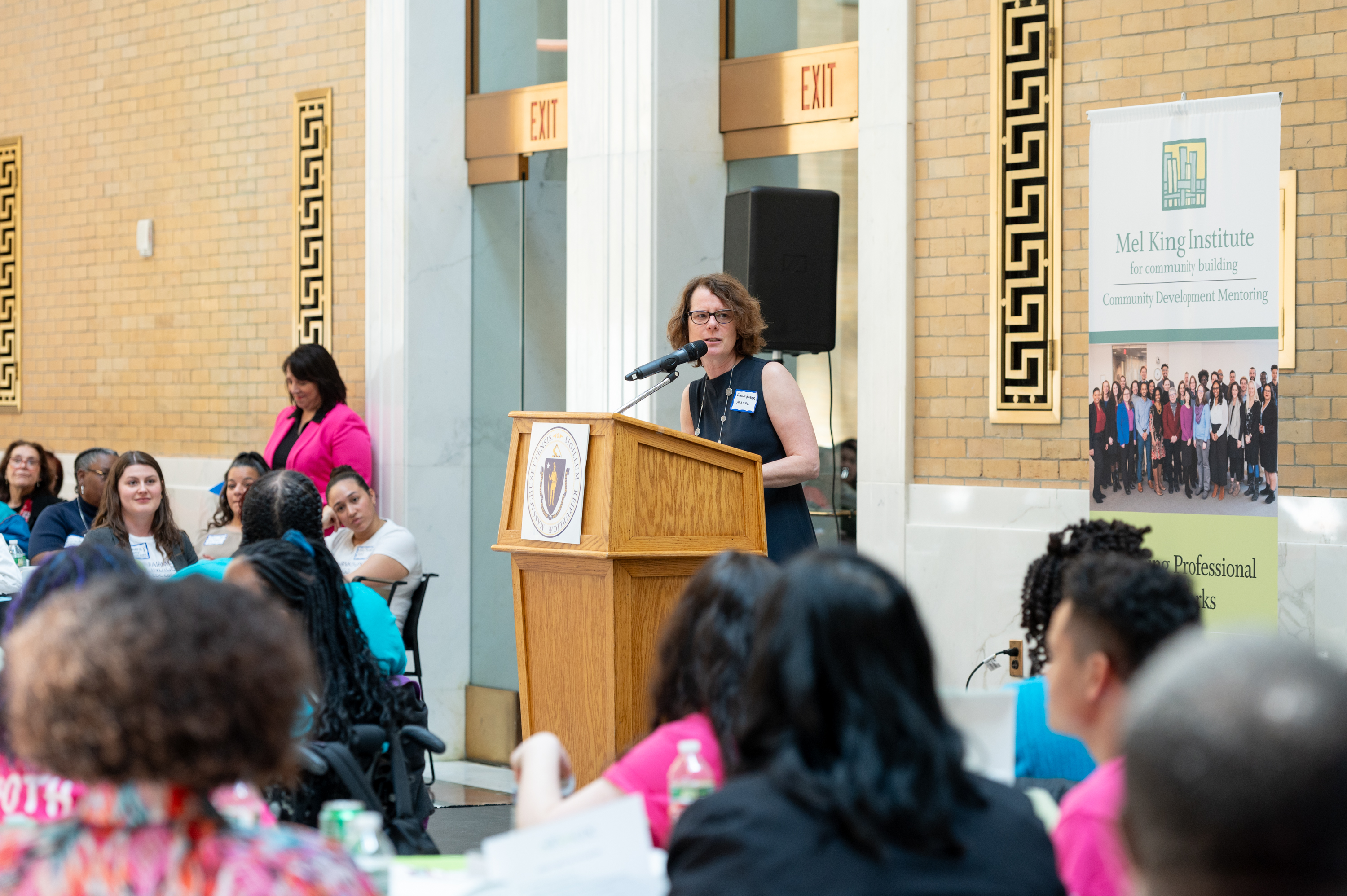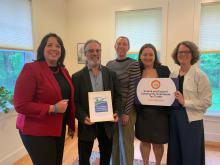Health Equity Committee Field Trip
Fourteen people attended our fourth annual Health Equity Field Trip on August 13th. The group met at Dorchester Bay EDC to learn about the work of the Fairmount Indigo CDC Collaborative as well the work of the CDCs that make up the Collaborative: Southwest Boston CDC, Codman Square CDC, and Dorchester Bay EDC. The group had the opportunity to discuss the ways in which these MACDC members are working at the intersection of Climate Justice and Health Equity. Everyone had a great time and learned a lot!
Massachusetts Community Health and Healthy Aging Fund
Ahead of the next application cycle for the Funds in January 2026, the Massachusetts Community Health and Healthy aging fund is accepting idea submissions from eligible MA-based entities working to address social determinants of health and the root causes of health inequities. The idea phase is open to organizations considering applying for funding for work on Policy, Systems, and Environmental (PSE) change, Healthy Aging, and Community Health Improvement Planning (CHIP) processes. This is an opportunity to receive feedback about alignment with the Funds’ purpose before submitting a full application. The second round for idea submissions will be open from August 11th to September 8th. Visit Idea Submission Phase Self-Assessment to take a self-assessment to determine if your organization is eligible and to learn more about what they are looking for, or head directly to mahealthfunds.org/apply to submit an idea.
Congratulations to JPNDC and Codman Square NDC!
Congratulations to Jamaica Plain NDC and Codman Square NDC who are receiving funding as part of City of Boston and the Boston Public Health Commissions Live Long and Well population health equity agenda to close the life expectancy gap in Boston by 2025. Codman Square will be working with others in Dorchester to support economic mobility services including housing and credit-building support, financial coaching, workforce development, and resources for childcare, transportation, and food access. JPNDC will work with others to expand Upham’s Community Care’s outreach vans to visit several Dorchester and Roxbury sites two days a week, with the goal of serving 3,480 people over two years. In addition to basic primary care services, the vans will provide access to economic mobility coaches and community food services.
Equity Initiative Updates
MACDC’s Housing Quality and Health Equity Initiative (“The Equity Initiative”) team are beginning work in a second cohort of Gateway Cities, including Lynn, New Bedford, and Worcester. The goal of this work is to identify local concerns and to identify ways to support work to improve housing quality concerns in these cities. The Equity Initiative team also held its second multi-city gathering for individuals from the first cohort of Gateway Cities, Brockton, Holyoke, and Springfield, in order to continue to support the work in these cities. In response to suggestions from the first cohort of Gateway Cities, the Equity Initiative Team also recently published their first Better Health Through Better Housing newsletter. Please contact Elana at elanab@macdc.org if you’d like to learn more.









